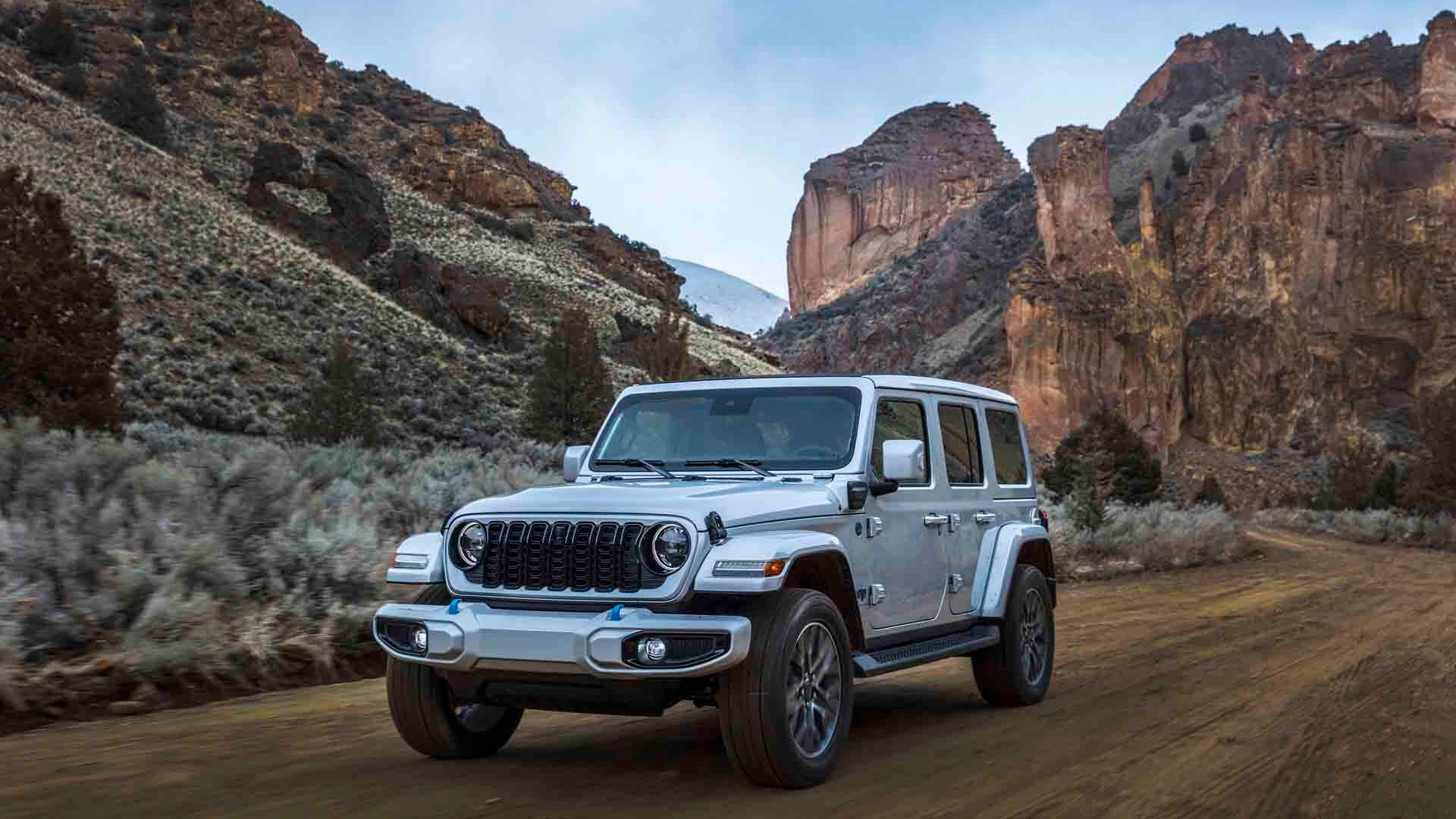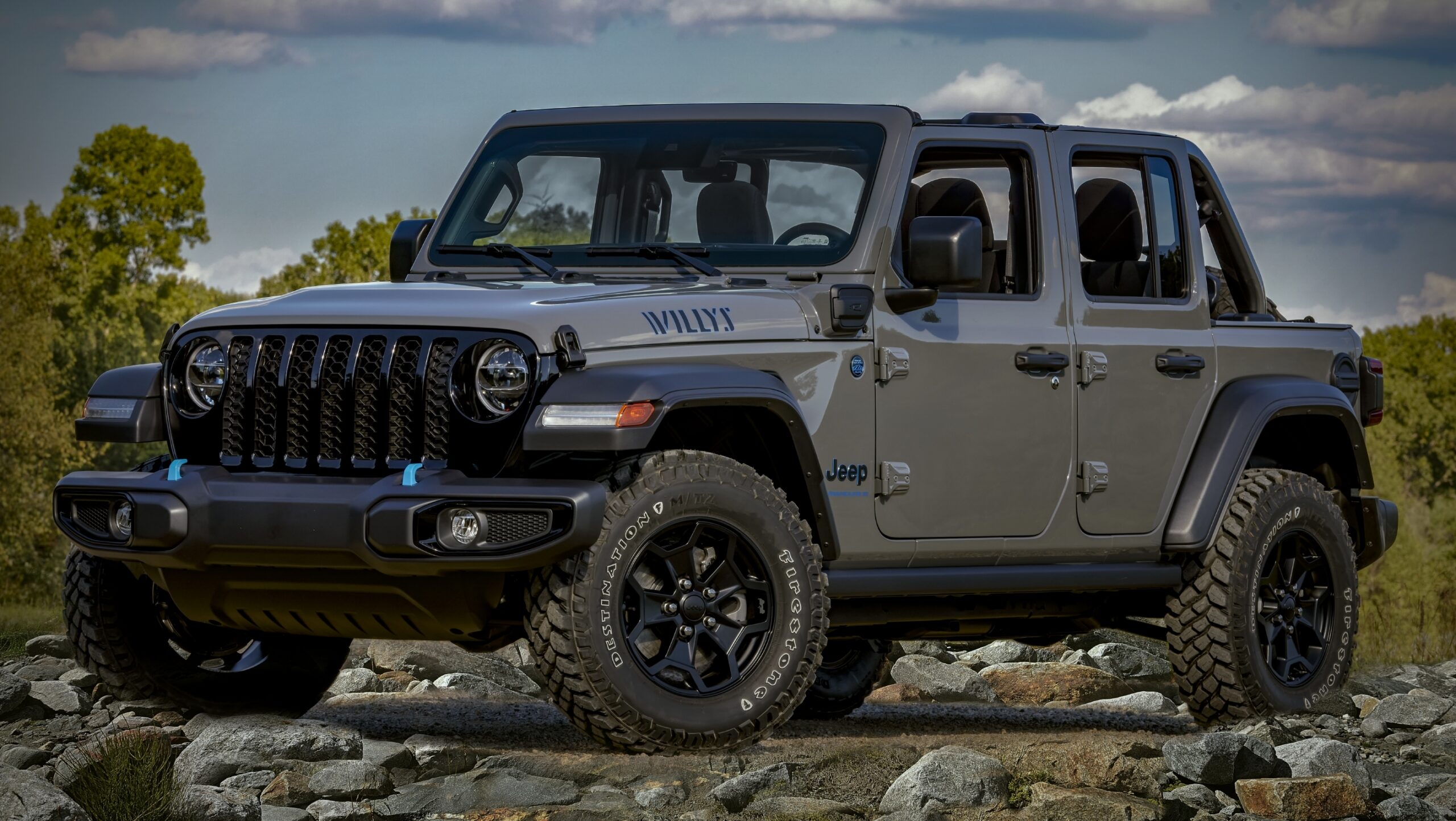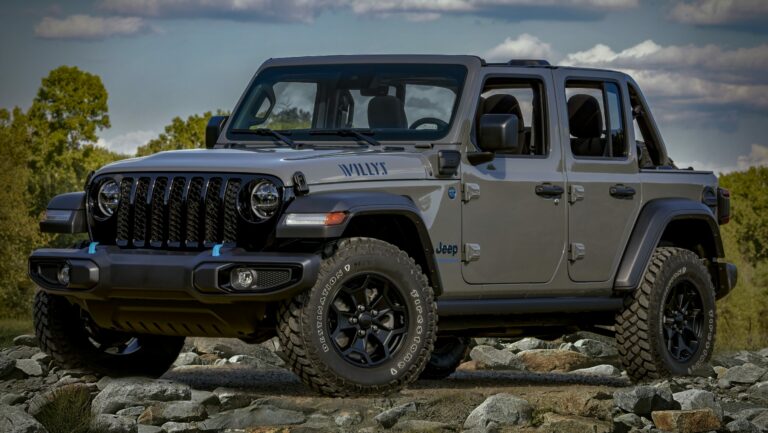Jeep Wrangler 5.7 Hemi: Unleashing the Beast Within
Jeep Wrangler 5.7 Hemi: Unleashing the Beast Within jeeps.truckstrend.com
Introduction: The Apex Predator of Off-Road Performance
For many Jeep Wrangler enthusiasts, the standard engine, while capable, often leaves something to be desired, especially when facing challenging trails, heavy modifications, or the need for effortless highway cruising. Enter the Jeep Wrangler 5.7 Hemi – not a factory option for most production models, but rather a highly sought-after, transformative engine swap that elevates the iconic off-roader into an entirely new league of power and performance. This isn’t just an engine upgrade; it’s a complete reimagining of the Wrangler’s capabilities, turning it from a robust trail machine into an undisputed apex predator, blending legendary off-road prowess with the exhilarating surge of American muscle. For those who demand uncompromising power and a truly unique driving experience, the 5.7 Hemi swap represents the pinnacle of Wrangler customization.
Jeep Wrangler 5.7 Hemi: Unleashing the Beast Within
The Allure of the Hemi Swap: Why Power Matters for the Wrangler
The stock Jeep Wrangler, whether equipped with the 3.8L V6, 3.6L Pentastar V6, or even the newer 2.0L Turbo, performs admirably for most users. However, the inherent design of a Wrangler encourages modification. Owners often add heavy steel bumpers, winches, roof racks, larger tires, and extensive armor. These additions significantly increase the vehicle’s curb weight, straining the stock powertrain and leading to sluggish acceleration, reduced climbing ability, and higher fuel consumption as the engine works harder.
This is where the allure of the Hemi truly shines. A 5.7L Hemi V8 engine provides a dramatic increase in horsepower and, crucially, torque. More torque means effortless crawling over obstacles, less strain on the drivetrain, and the ability to maintain speed on steep inclines without feeling breathless. On the highway, merging into traffic or passing becomes a confident maneuver rather than a white-knuckle experience. For those who tow, the Hemi transforms the Wrangler into a surprisingly capable hauler. Ultimately, the Hemi swap isn’t just about speed; it’s about unlocking the Wrangler’s full potential, ensuring it can handle any challenge thrown its way with power to spare.
Understanding the 5.7L Hemi Engine
The 5.7-liter Hemi V8 engine, a cornerstone of Chrysler’s powertrain lineup since its reintroduction in 2003, is renowned for its robust design, impressive power output, and distinctive hemispherical combustion chambers that give it its legendary name. Found in a wide array of Dodge, Ram, Chrysler, and Jeep vehicles, the 5.7L Hemi typically produces between 345 to 395 horsepower and 375 to 410 lb-ft of torque in its stock form, depending on the year and specific application.
Key technologies within the 5.7L Hemi include Multi-Displacement System (MDS), which deactivates cylinders under light load for improved fuel economy, and Variable Valve Timing (VVT) for optimized performance across the RPM range. For a Wrangler swap, the 5.7L is often preferred over larger Hemis (like the 6.1L, 6.2L, or 6.4L) due to its more manageable size, weight, and slightly lower cost, while still offering a substantial power upgrade that perfectly complements the Wrangler’s chassis without excessive strain. Its proven reliability and widespread availability also make it an ideal candidate for such an ambitious conversion.
The Hemi Swap Process: A Detailed Overview
Transforming a stock Wrangler into a Hemi-powered beast is a complex undertaking that requires meticulous planning, specialized components, and significant mechanical expertise. It’s not a weekend DIY project for the average garage enthusiast.
![]()
Planning & Sourcing
The journey begins with thorough planning. You’ll need to decide on your engine source (a used pull-out from a donor vehicle, a remanufactured engine, or a brand-new crate engine) and, critically, choose a reputable swap kit. Companies like AEV (American Expedition Vehicles), MoTech, and JSS (Jeep Speed Shop) specialize in developing comprehensive kits that simplify the integration of the Hemi into the Wrangler chassis. These kits typically include engine mounts, transmission adapters, wiring harnesses, and all the necessary hardware for a seamless fit.
Key Components for the Swap
Beyond the engine itself, numerous components must be replaced or upgraded to accommodate the Hemi’s power and ensure proper function:
- Engine: The heart of the swap, typically a 5.7L Hemi.
- Transmission: Often, the stock Wrangler transmission is not robust enough. A compatible automatic transmission (like the 545RFE, 65RFE, or 8HP70, depending on the Hemi generation) is usually required, along with an adapter plate for the Wrangler’s transfer case.
- Transfer Case: The stock transfer case (e.g., NV241) is often retained, but its strength should be assessed, especially with heavier off-road use.
- Wiring Harness & ECU: This is one of the most complex parts. A custom or modified wiring harness is needed to integrate the Hemi’s electronics with the Wrangler’s existing systems (gauges, ABS, stability control). A reprogrammed or new ECU (Engine Control Unit) is essential for the Hemi to run correctly.
- Cooling System: The Hemi generates significantly more heat. An upgraded radiator, fan shroud, and sometimes auxiliary coolers are mandatory to prevent overheating.
- Exhaust System: Custom headers and a cat-back exhaust system are needed to route the exhaust from the V8.
- Fuel System: The fuel pump and lines may need upgrading to handle the Hemi’s higher fuel demands.
- Engine Mounts & Driveshafts: Custom engine mounts are provided in swap kits. Driveshafts may need to be lengthened or shortened, and upgraded for strength.
- Gauges & HVAC: Integration kits ensure the factory gauges function correctly, and the HVAC system remains operational.

Installation Steps (Simplified)
- Preparation: Disconnect battery, drain fluids, remove hood, grille, and front clip.
- Removal: Extract the existing engine, transmission, and associated wiring.
- Chassis Prep: Clean the engine bay, install new engine mounts.
- Engine & Transmission Installation: Mount the Hemi and its compatible transmission into the chassis.
- Wiring & Plumbing: Connect the custom wiring harness, fuel lines, coolant lines, and vacuum lines. This is where most electrical expertise is required.
- Exhaust & Cooling: Install custom exhaust headers and the upgraded cooling system.
- Fluids & Initial Start-up: Fill with new fluids, perform initial checks, and attempt the first start.
- Tuning: The ECU will require specific tuning to optimize performance, manage emissions, and ensure all systems communicate correctly.
Important Considerations
- Skill Level: This is an advanced project. Unless you possess significant automotive electrical and mechanical expertise, professional installation is highly recommended.
- Specialized Tools: Beyond basic hand tools, you’ll need engine hoists, transmission jacks, specialized wiring tools, and diagnostic software.
- Time Commitment: A DIY swap can take weeks or even months. Professional shops might complete it in 2-4 weeks, depending on their backlog.
- Budget: This is a significant financial investment. Factor in not just the engine and kit, but also potential ancillary upgrades and unforeseen costs.
Performance and Driving Dynamics
The transformation of a Jeep Wrangler with a 5.7 Hemi swap is nothing short of revolutionary.
- On-Road: The most immediate and noticeable change is the sheer power. Acceleration is vastly improved, making the Wrangler feel much lighter and more responsive. Highway cruising is effortless, with ample power for passing and maintaining speed up hills, even with large tires. The iconic rumble of the Hemi V8 provides a thrilling soundtrack to every drive.
- Off-Road: The increased torque translates directly into superior off-road capability. Low-speed crawling becomes smoother and more controlled, as the engine doesn’t have to work as hard. Climbing steep, rocky ascents is less of a struggle, and the power allows for easier recovery in challenging situations. The ability to spin larger tires with ease also enhances performance in sand or mud.
- Fuel Economy: While performance dramatically improves, fuel economy will generally decrease. The Hemi, even with MDS, is a larger, more powerful engine. Expect MPG figures to be in the low to mid-teens, depending on driving style and vehicle modifications.
Important Considerations and Challenges
While the Hemi swap offers undeniable benefits, it’s crucial to understand the challenges and considerations involved:
- Cost: This is the most significant hurdle. A complete 5.7 Hemi swap, including the engine, kit, and professional labor, can easily range from $20,000 to $35,000+, depending on the components chosen, the shop, and any additional upgrades deemed necessary.
- Complexity: As detailed, this is a highly complex mechanical and electrical endeavor. Cutting corners can lead to reliability issues.
- Reliability: A well-executed Hemi swap using quality components and proper tuning can be highly reliable. However, a poorly done swap can lead to chronic issues, particularly with cooling, wiring, or sensor compatibility. Heat management is critical, especially in off-road conditions.
- Legality & Emissions: This is a major concern in many regions. Some states (like California) have very strict emissions regulations that make Hemi swaps difficult or impossible to register unless they meet specific CARB (California Air Resources Board) compliance standards, which often involves using a specific, certified swap kit. Always research your local laws before committing.
- Resale Value: While a Hemi-swapped Wrangler can command a premium from the right buyer, it also narrows the potential market. Some buyers may be wary of a modified vehicle, while enthusiasts will appreciate the upgrade.
- Ancillary Upgrades: The Hemi’s power puts increased stress on other components. Upgraded brakes are almost mandatory for safety. Stronger axles (e.g., Dana 44 or 60), driveshafts, and a more robust suspension system become highly advisable, if not necessary, to handle the added torque and weight. Ignoring these can lead to premature wear or catastrophic failure.
Choosing Your Path: DIY vs. Professional Installation
Deciding whether to tackle a Hemi swap yourself or hire a professional is a critical choice based on skill, time, and budget.
- DIY (Do-It-Yourself):
- Pros: Significant cost savings on labor, immense satisfaction, deep understanding of your vehicle.
- Cons: Extremely time-consuming, requires extensive mechanical and electrical expertise, specialized tools, higher risk of errors or unforeseen issues, no professional warranty on labor.
- Professional Installation:
- Pros: Expertise and experience, quicker turnaround time, professional warranty on labor, peace of mind knowing it’s done correctly, often includes tuning.
- Cons: Significantly higher cost due to labor, less direct control over the process.
For most individuals, given the complexity and financial investment, professional installation by a reputable shop specializing in Hemi swaps is the recommended path. Companies like AEV (American Expedition Vehicles) not only sell kits but also offer complete vehicle builds, providing a turn-key solution with a strong reputation.
Practical Advice and Actionable Insights
- Do Your Homework: Thoroughly research swap kits, reputable installers, and legal requirements in your area before spending a dime.
- Budget Generously: Add a contingency of 20-30% to your estimated budget for unforeseen costs. This is rarely a project that comes in under budget.
- Don’t Skimp on Cooling: An inadequate cooling system is the number one cause of Hemi swap headaches. Invest in the best radiator and fan setup you can afford.
- Upgrade Ancillary Components: Factor in the cost of upgraded brakes, axles, and suspension from the outset. Your stock components were not designed for Hemi power.
- Verify Legality: Check your state’s emissions and modification laws. Some regions are far more lenient than others.
- Consider the "Total Package": A Hemi swap isn’t just about the engine. Think about how it integrates with your existing modifications (tire size, gearing) and what additional upgrades will be necessary to fully utilize the power safely and reliably.
Jeep Wrangler 5.7 Hemi: Estimated Cost Breakdown (Example)
Please note: These figures are estimates and can vary wildly based on the year of the Wrangler, the specific Hemi engine (new crate vs. used pull-out), the swap kit chosen, the shop’s labor rates, and the quality of ancillary components.
| Component/Service | Estimated Low Cost ($) | Estimated High Cost ($) | Notes |
|---|---|---|---|
| 5.7L Hemi Engine | |||
| Used Pull-out (Good Condition) | 3,000 | 7,000 | Requires thorough inspection, potentially rebuild. |
| Remanufactured | 5,000 | 9,000 | More reliable than used, often with warranty. |
| New Crate Engine | 7,000 | 12,000 | Most reliable option, full factory warranty. |
| Hemi Swap Kit | (e.g., AEV, MoTech, JSS) Includes mounts, wiring, ECU, etc. | ||
| Comprehensive Kit | 6,000 | 12,000 | Varies by components included, generation (JK/JL). |
| Transmission | (e.g., 545RFE, 65RFE, 8HP70) Compatible with Hemi, potentially adapter. | ||
| Used/Remanufactured | 1,500 | 4,000 | |
| New/Upgraded | 3,000 | 6,000 | |
| Labor (Professional Install) | Highly variable by shop location and reputation. | ||
| Typical Labor Cost | 8,000 | 15,000 | Can be more for complex installations or additional work. |
| Ancillary Parts & Upgrades | Critical for reliability and safety. | ||
| Upgraded Cooling System | 1,000 | 2,500 | Larger radiator, fan, hoses, overflow. |
| Custom Exhaust | 800 | 2,000 | Headers, catalytic converters, muffler. |
| Fuel System Upgrade | 300 | 800 | Fuel pump, lines. |
| Upgraded Brakes | 1,000 | 3,000 | Larger rotors, calipers, pads. Highly recommended. |
| Driveshafts (Custom/Upgraded) | 500 | 1,500 | Necessary if lengths change or for added strength. |
| TOTAL ESTIMATED COST | $20,100 | $63,800+ | (Excludes potential axle/suspension upgrades, which can add $5,000 – $20,000+) |
Note: This table does not include the cost of the base Jeep Wrangler itself.
Frequently Asked Questions (FAQ) about the Jeep Wrangler 5.7 Hemi
Q1: Is the Hemi swap worth it for a Jeep Wrangler?
A1: For enthusiasts seeking significant power, improved off-road capability, and enhanced highway performance, absolutely. It transforms the Wrangler into a true powerhouse. However, it’s a substantial investment in time and money, so its "worth" depends on individual priorities and budget.
Q2: How much does a Hemi swap typically cost?
A2: A professional 5.7 Hemi swap can range from $20,000 to $35,000+, depending on whether you use a used, remanufactured, or new crate engine, the specific swap kit, labor rates, and necessary ancillary upgrades like brakes and cooling.
Q3: How long does a Hemi swap take?
A3: If performed by a professional shop, it typically takes 2-4 weeks, depending on the shop’s schedule and the complexity of the specific build. A DIY swap can take several months of dedicated effort.
Q4: Will a Hemi swap affect my Wrangler’s reliability?
A4: A properly executed Hemi swap using quality components and professional tuning can be very reliable. However, a poorly planned or installed swap can lead to chronic issues, particularly with cooling, wiring, and sensor integration.
Q5: Do I need to upgrade other components in my Wrangler after a Hemi swap?
A5: Yes, absolutely. Upgraded brakes are crucial for safety. Stronger axles, driveshafts, and a robust cooling system are highly recommended, if not mandatory, to handle the increased power and torque and ensure longevity, especially if you plan on heavy off-roading.
Q6: Is it legal to do a Hemi swap in my state?
A6: This varies significantly by state and country. Some regions have strict emissions regulations (e.g., California’s CARB compliance) that make engine swaps challenging or illegal unless specific certified kits are used. Always research your local laws before proceeding.
Q7: Can I tow more with a Hemi-swapped Wrangler?
A7: While the Hemi provides significantly more towing power, the Wrangler’s chassis, suspension, and brake system still have inherent limitations. Consult your vehicle’s Gross Vehicle Weight Rating (GVWR) and Gross Combined Weight Rating (GCWR), and ensure all components are properly rated for any increased towing you plan to do. Upgraded brakes are non-negotiable for towing with a Hemi.
Q8: What’s the fuel economy like after a Hemi swap?
A8: Expect a decrease in fuel economy. While the 5.7L Hemi is more efficient than some V8s, it’s still a larger engine. Real-world MPG figures are typically in the low to mid-teens, depending on driving style, tire size, and gearing.
Conclusion: The Ultimate Wrangler Expression
The Jeep Wrangler 5.7 Hemi stands as a testament to the pursuit of ultimate performance and customization within the off-road community. It transforms an already iconic vehicle into a true powerhouse, offering unparalleled acceleration, effortless highway cruising, and an undeniable advantage on the most challenging trails. While the journey to a Hemi-powered Wrangler is a significant investment of time, money, and planning, the reward is a vehicle that delivers a driving experience unlike any other. For those who demand the pinnacle of power and capability from their Wrangler, the 5.7 Hemi swap is not just an upgrade; it’s the ultimate expression of what a Jeep can truly be. It’s a commitment to a beast that roars with confidence, conquers with ease, and turns heads wherever it goes.





